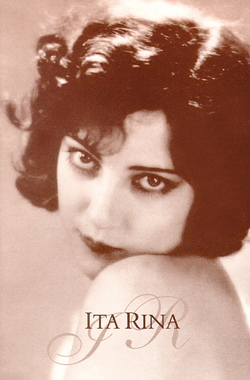Difference between revisions of "Škratelj Homestead"
(venue) |
|||
| Line 38: | Line 38: | ||
The [[Škratelj Homestead]] is an ethnological monument that represents not only architectural and regional cultural heritage but is also is the birthplace of the first Slovene film star [[Ida Kravanja]] (stage name '''[[Ita Rina]]'''). | The [[Škratelj Homestead]] is an ethnological monument that represents not only architectural and regional cultural heritage but is also is the birthplace of the first Slovene film star [[Ida Kravanja]] (stage name '''[[Ita Rina]]'''). | ||
| − | The permanent exhibition on the actress, conceived by the [[Slovenian Cinematheque Museum Department]] and installed on the first floor of the homestead in [[established::1998]], has been expanded into the '''Museum of Slovenian Film Actors'''. The project has been supported by the [[Ministry of Culture]] and the [[Municipality of Divača]], while the renovation works on the Škratelj's homestead were supported by the donation of Norway through the Norwegian Financial Mechanism. | + | The permanent exhibition on the actress, conceived by the [[Slovenian Cinematheque Museum Department]] and installed on the first floor of the homestead in [[established::1998]], has been expanded into the '''Museum of Slovenian Film Actors'''. The project has been supported by the [[Ministry of Culture]] and the [[Municipality of Divača]], while the renovation works on the Škratelj's homestead were supported by the donation of Norway through the [[[[EEA and Norway Grants]]|Norwegian Financial Mechanism]]. |
}} | }} | ||
| Line 58: | Line 58: | ||
The young Slovene actress [[Ita Rina]] first lived in Berlin, at that time the centre of the European film industry. Her debut was in the role of a chambermaid in ''Was die Kinder ihren Eltern verschweigen''. After ''Erotikon'' she performed in the first Czech sound film ''Gallows Toni'' in 1930. She declined an invitation from Hollywood and instead got married, changed her name to [[Tamara Djordjević]], and moved to Belgrade. After World War II she starred in in several Yugoslav theatre productions and the Yugoslav film production ''War'' (1960), however she never managed to regain her earlier fame. In 1979 Ita Rina died in Budva, and was buried in Belgrade. | The young Slovene actress [[Ita Rina]] first lived in Berlin, at that time the centre of the European film industry. Her debut was in the role of a chambermaid in ''Was die Kinder ihren Eltern verschweigen''. After ''Erotikon'' she performed in the first Czech sound film ''Gallows Toni'' in 1930. She declined an invitation from Hollywood and instead got married, changed her name to [[Tamara Djordjević]], and moved to Belgrade. After World War II she starred in in several Yugoslav theatre productions and the Yugoslav film production ''War'' (1960), however she never managed to regain her earlier fame. In 1979 Ita Rina died in Budva, and was buried in Belgrade. | ||
| + | ==Venue== | ||
| + | The Ita Rina Museum was renovated in 2008–2011 with the help of the [[EEA and Norway Grants]] and co-funded by the [[Ministry of Culture]] and the Municipality of Divača. The Škratelj Homestead incorporates 325 m² of the exhibition space and the 300 m² large auditorium for the open air screenings and the cinema hall with 60 seats. | ||
==See also== | ==See also== | ||
Revision as of 14:08, 19 June 2011
Škratelj Homestead
The Škratelj Homestead and its courtyard (borjač), a well-preserved monument of 17th-century Karst architecture, represent the peak of the spontaneous folk architecture in the region. In the early part of the 20th century the homestead was the biggest and the most important house in Divača, a village resting on the edge of the Divaška Valley.
In 1998 the Municipality of Divača, in collaboration with the Slovenian Cinematheque and the Institute for the Protection of Cultural Heritage of Slovenia, Nova Gorica Regional Office, transformed part of the Škratelj Homestead, the residential building called the Škratelj House, into a museum in which the permanent exhibition on the actress has been installed. The exhibition offers an insight into the life of Ita Rina and the development of Slovene cinema during her day.
The Museum of Slovenian Film Actors was inaugurated in July 2010. The museum includes a small cinema hall for screenings and workshops.
Ita Rina
Born in the village of Divača, Ita Rina (1907–1979) was the first Slovene actress to achieve international star status – her heyday was in the late 1920s when she starred in the film Erotikon (1929) by Czech director Gustav Machaty, which enjoyed major box-office success both in Europe and in the USA.
The young Slovene actress Ita Rina first lived in Berlin, at that time the centre of the European film industry. Her debut was in the role of a chambermaid in Was die Kinder ihren Eltern verschweigen. After Erotikon she performed in the first Czech sound film Gallows Toni in 1930. She declined an invitation from Hollywood and instead got married, changed her name to Tamara Djordjević, and moved to Belgrade. After World War II she starred in in several Yugoslav theatre productions and the Yugoslav film production War (1960), however she never managed to regain her earlier fame. In 1979 Ita Rina died in Budva, and was buried in Belgrade.
Venue
The Ita Rina Museum was renovated in 2008–2011 with the help of the EEA and Norway Grants and co-funded by the Ministry of Culture and the Municipality of Divača. The Škratelj Homestead incorporates 325 m² of the exhibition space and the 300 m² large auditorium for the open air screenings and the cinema hall with 60 seats.
See also
- Slovenian Cinematheque Museum Department
- Institute for the Protection of Cultural Heritage of Slovenia, Nova Gorica Regional Office
External links
- Divača Museum website – Museum of Slovenian Film Actors under construction
- Ita Rina on Wikipedia
- An article at the EEA Grants page – Bringing Slovenian film history into the light
- Review of Eroticon





